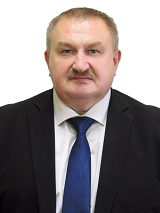Analysis of severity of victims’ condition with shockogenic injuries sustained in automobile accidents in seaside region of Arctic zone of Russia: descriptive study
https://doi.org/10.22328/2413-5747-2025-11-3-47-52
EDN: VKHBXT
Abstract
OBJECTIVE. To determine the peculiarities of the severity of the victims’ condition with shockogenic traumas received in road traffic accidents (RTA) on federal, regional and local highways in the seaside region of the Arctic zone of the Arkhangelsk region.
MATERIALS AND METHODS. There was the analysis of medical documents of 71 victims of road accidents on the roads of the Arkhangelsk region who had received severe mechanical trauma accompanied by shock. The severity of the victims’ condition at admission to the trauma center was assessed according to the CAP-SP scale. Three categories of victims were distinguished: with severe combined injuries, polytraumas and extremely severe polytraumas. RESULTS. The severity of the victims’ condition who suffered shock trauma on a federal highway is higher than those injured on regional and local roads. Victims of federal highway accidents are more likely to suffer polytrauma and extremely severe polytrauma compared to those injured on regional and local roads. High severity shock is more common in victims injured on the federal highway than in victims injured on regional and local roads.
DISCUSSION. The most severe condition of the victims who received shockogenic trauma on the federal highway is probably related to the peculiarities of traffic on this road, which is caused by higher speed, higher load capacity, higher density of the vehicle flow compared to the regional and local roads.
CONCLUSION. The severity of the victims’ condition in road accidents and severe mechanical trauma accompanied by shock on federal, regional or local roads is related to the place of injury. The most severe condition of victims, which is manifested by clinical picture of polytrauma, including extremely severe, occurs on the federal highway. At the same time, shock of III-IV degree also occurs more often in victims of road traffic accidents on the federal highway. In order to provide timely emergency medical care to victims of road accidents on the federal highway, it is necessary to create mobile highway stations.
About the Authors
S. A. GudkovRussian Federation
Sergey A. Gudkov – Head of the Transfusiology Office, transfusiologist, anesthesiologist
163000, Arkhangelsk, Troitskiy Ave., 115
Yu. E. Barachevsky
Russian Federation
Yuri E. Barachevsky – Dr. of Sci. (Med.), Professor, Head of the Department of Mobilization Training of Healthcare and Disaster Medicine
163000, Arkhangelsk, Troitskiy Ave., 51
O. N. Popova
Russian Federation
Olga N. Popova – Dr. of Sci. (Med.), Associate Professor, Professor of the Department of Hygiene and Medical Ecology
163000, Arkhangelsk, Troitskiy Ave., 51
S. V. Bragina
Russian Federation
Svetlana V. Bragina – Cand. of Sci. (Med), Associate Professor, Head of the Department of Traumatology, Orthopedics and Military Surgery
163000, Arkhangelsk, Troitskiy Ave., 51
References
1. Mosyagin I. G. Strategy for the development of marine medicine in the Arctic main regional direction of the national marine policy of Russia. Marine Medicine, 2017, Vol. 3, No. 3, pp. 7–22 (in Russ) doi: 10.22328/2413-5747-2017-3-3-7-22.
2. Radivilko K. S., Maslakova D. A. Organization of prehospital medical care for victims of road accidents in the Kemerovo region – Kuzbass. Polytrauma, 2024, No. 2, pp. 6–10 (in Russ) doi: 10.24412/1819-1495-2024-2-6-10.
3. Dobson G. P. Mechanisms of early trauma-induced coagulopathy: The clot thickens or not? J Trauma Acute Care Surg, 2015, Vol. 79, № 2, pp. 301–309.
4. Duret J. Skeletal muscle oxygenation in severe trauma patients during haemorrhagic shock resuscitation. Crit Care, 2015, Vol. 19, pp. 141.
5. Gudkov S. A., Barachevsky Yu. E., Popova O. N., Bragina S. V. Seasonal characteristics of shock-induced injuries in the Arctic zone of the Arkhangelsk region. Medical-biological and socio-psychological problems of safety in emergency situations, 2024, No. 3, pp. 37–44 (in Russ) doi: 10.25016/2541-7487-2024-0-3-37-44.
6. Gumanenko E. K., Boyarintsev V. V., Suprun T. Yu., Lyashedko P. P. Objective assessment of injury severity. St. Petersburg; 1999: 110 p. (in Russ)
7. Gumanenko E. K., Zavrazhnov A. A., Suprun A. Yu., Khromov A. A. Severe combined trauma and polytrauma: definition, classification, clinical characteristics, treatment outcomes. Polytrauma, 2021, No. 4, pp. 6–17 (in Russ) doi: 10.24412/1819-1495-2021-4-6-17.
8. Matveev R. P., Gudkov S. A. Epidemiological characteristics of shock trauma in the Arctic and near-Arctic zone of the Arkhangelsk region. Medical-biological and socio-psychological problems of safety in emergency situations, 2017, No. 4, pp. 34–40 (in Russ) doi: 10.25016/2541-7487-2017-0-4-34-40.
9. Zavrazhnov A. A., Gumanenko E. K., Suprun A. Yu., Soloviev I. A., Zharovskikh O. S., Dedov A. V. Severe combined trauma and polytrauma is a multidisciplinary clinical pathology and an urgent multidisciplinary problem. Almanac of the Vishnevsky Institute of Surgery, 2022, No. 1, pp. 692-693 (in Russ)
Review
For citations:
Gudkov S.A., Barachevsky Yu.E., Popova O.N., Bragina S.V. Analysis of severity of victims’ condition with shockogenic injuries sustained in automobile accidents in seaside region of Arctic zone of Russia: descriptive study. Marine Medicine. 2025;11(3):47-52. (In Russ.) https://doi.org/10.22328/2413-5747-2025-11-3-47-52. EDN: VKHBXT


































